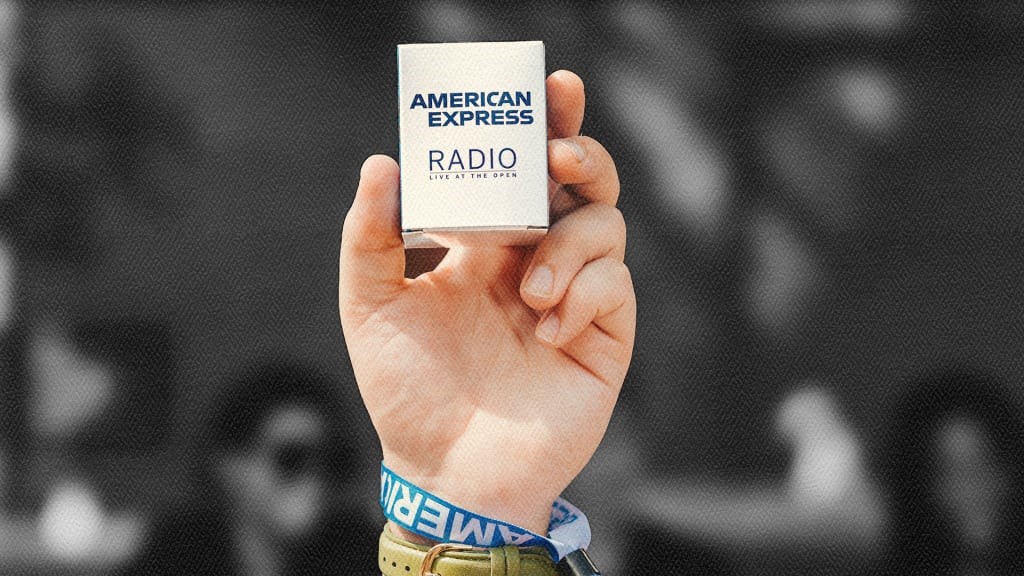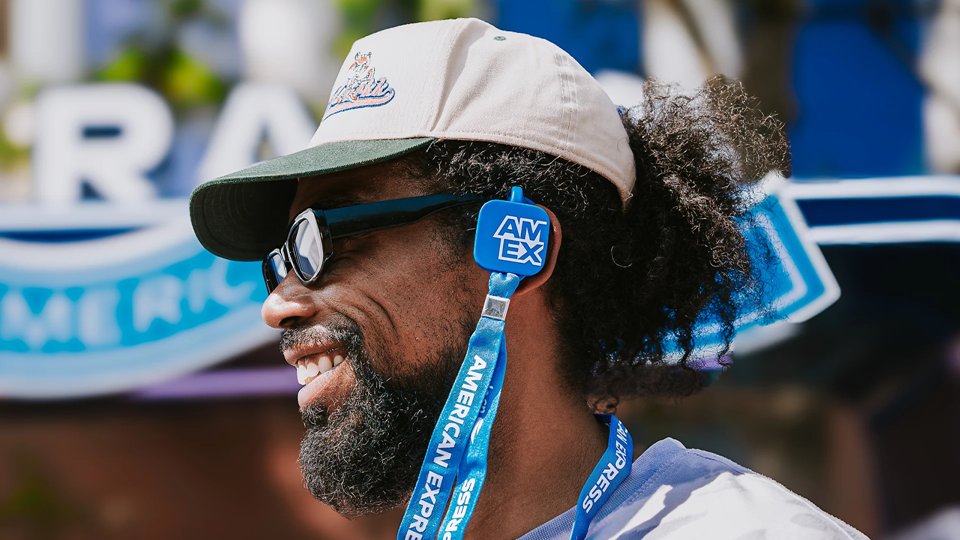How American Express made this dorky earpiece into the US Open’s hottest accessory
September 01, 2024
How American Express made this dorky earpiece into the US Open’s hottest accessory
Though the annual tennis event’s signature Honey Deuce cocktail dominates social media, AmEx’s earpiece radios are a recognizable sight in the stands.
Katie Couric sits in the stands of Arthur Ashe Stadium following the relentless on-court thwacks of the US Open tennis tournament. Curiously dangling from her ear is an American Express-branded blue lanyard. Hidden under her hair is an earpiece that’s letting her tune into ESPN’s live coverage of the match she’s watching.
Couric is just one of the handful of celebrities—and the thousands of fans—who have embraced American Express’s OneTune radios. Provided by Live Sports Radio and available only to American Express cardholders, the devices broadcast ESPN’s commentary to the US Open fans sitting in the stands, offering insight into the sport whose noise restrictions limit loudspeaker use during a match.
Though Instagram is filled with shots of the Open’s $23 signature Honey Deuce cocktail—made with vodka, lemonade, and raspberry liqueur—the somewhat dorky-looking headset has become the event’s most visible accessory.
The American Express radios are a hot commodity
The OneTune radios are a stalwart of American Express’s sponsorship of the Open. The company has partnered with the U.S. Tennis Association, which puts on the event, for 31 years. Of those years, AmEx has handed out radios for 24 of them.
“It is about keeping [fans] as close to the action as possible,” Suzuki says. “Whether they are sitting courtside at Ashe, or having their fifth glass of champagne out in the concessions, [they] stay close to that live commentary.”
Because they’re available only to American Express customers, the OneTune devices bring an air of exclusivity with them (cardholders can get one radio each day they attend the tournament). The radios are pre-tuned to a frequency that’s transmitted from the top of Arthur Ashe Stadium broadcasting ESPN’s coverage.
“We run out every single year,” Suzuki says. “Every single year since 2002, we’ve been increasing the number that we make available here on the grounds.”
The company also brings the OneTune to other events it sponsors, such as the U.S. Open of golf and Formula One auto racing events.

The OneTune is as much about branding as tennis
Beyond offering die-hard fans and casual viewers insight into the action on court, the radios are also a masterful branding play. The American Express logo wraps these devices, making them both useful for fans and striking advertisements for the company.
The branding also gets American Express some incidental celebrity coverage. Alongside Couric, actor Peter Sarsgaard wore the royal blue earpiece. Will Ferrell got some style coverage at this year’s Wimbledon for his newly gray hair (he was also sporting an American Express radio in his ear).
Last year, the radios facilitated a touching over-air moment. Tennis commentator Cliff Drysdale spotted actress Charlize Theron in the stands. She also happened to be wearing the OneTune. Drysdale expressed his praise for Theron, relating their South African heritage, before finally calling out to her: “Hey, Charlize. Hello! Oh boy, I had the guts finally to do that on air.”
Theron gifted Drysdale with a wide smile and some air kisses.
With the celebrity moments and its visibility, Suzuki says the radio is a venue-appropriate add-on to the company’s already significant presence in Flushing. “It’s not obtuse—we don’t want to create things that feel out of place,” she says. “This is a very natural integration into its surroundings, [and] a natural integration for us with our brand as well.”
It’s not a necessity to enjoy the tennis matches, but the low-tech solution works on the grounds where cell service can be spotty and the Wi-Fi can be overloaded.
“Maybe you’re in between matches and you want to know what’s happening somewhere else,” Suzuki says. “You pull out your phone, and perhaps you’re able to pull up ESPN or not, but guess what? That radio is always going to be cranking.”
ABOUT THE AUTHOR
Fast Company
(4)



